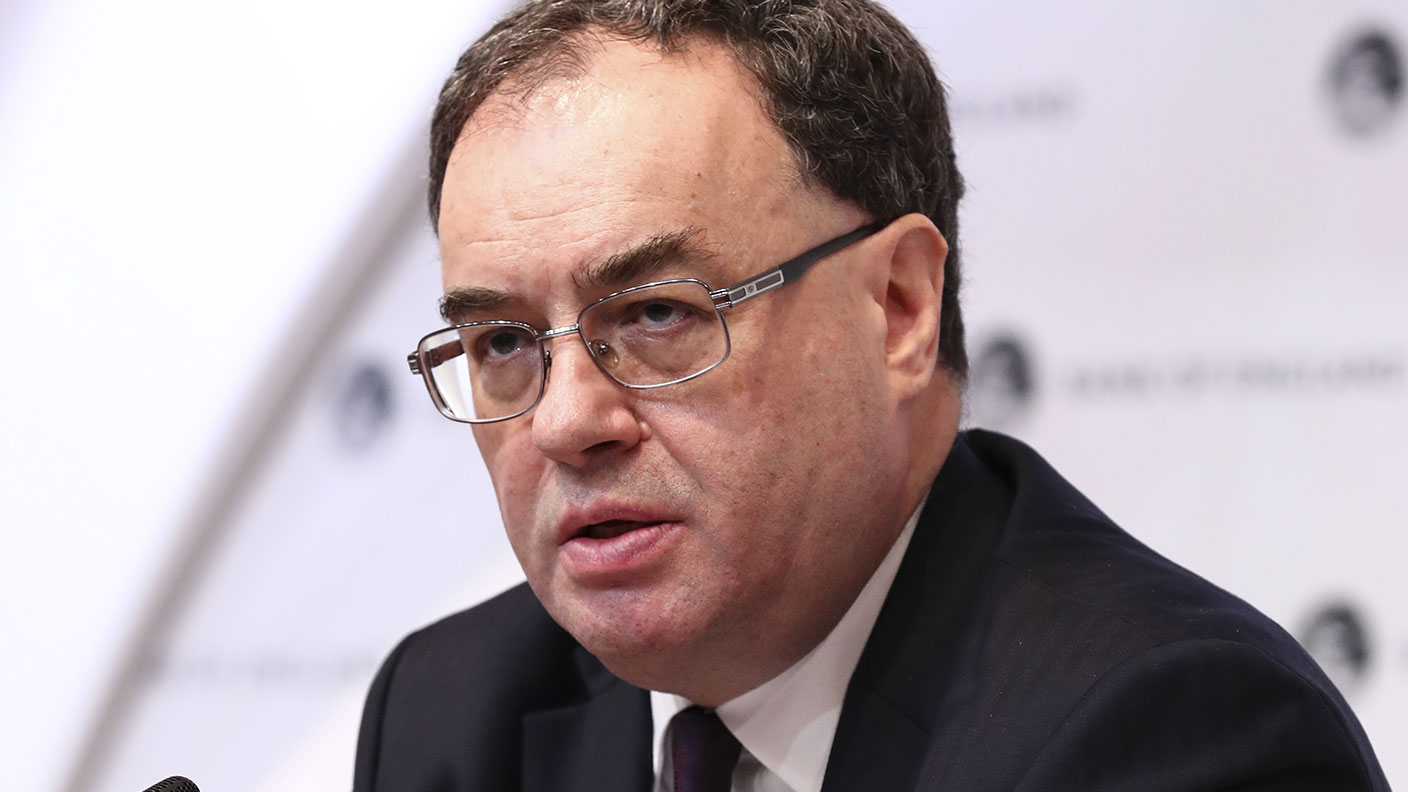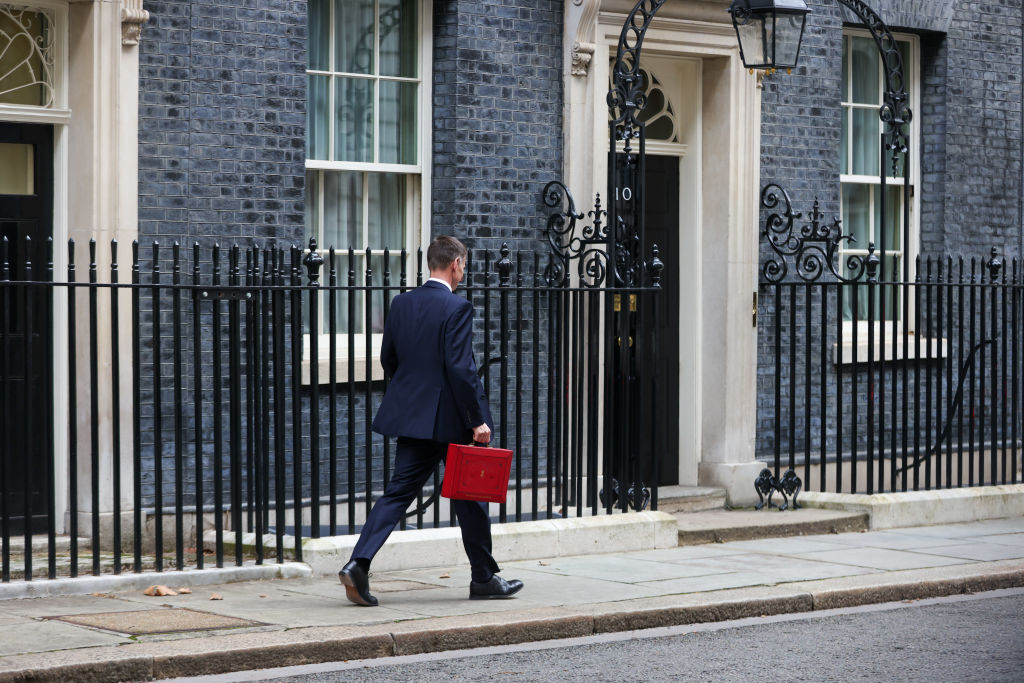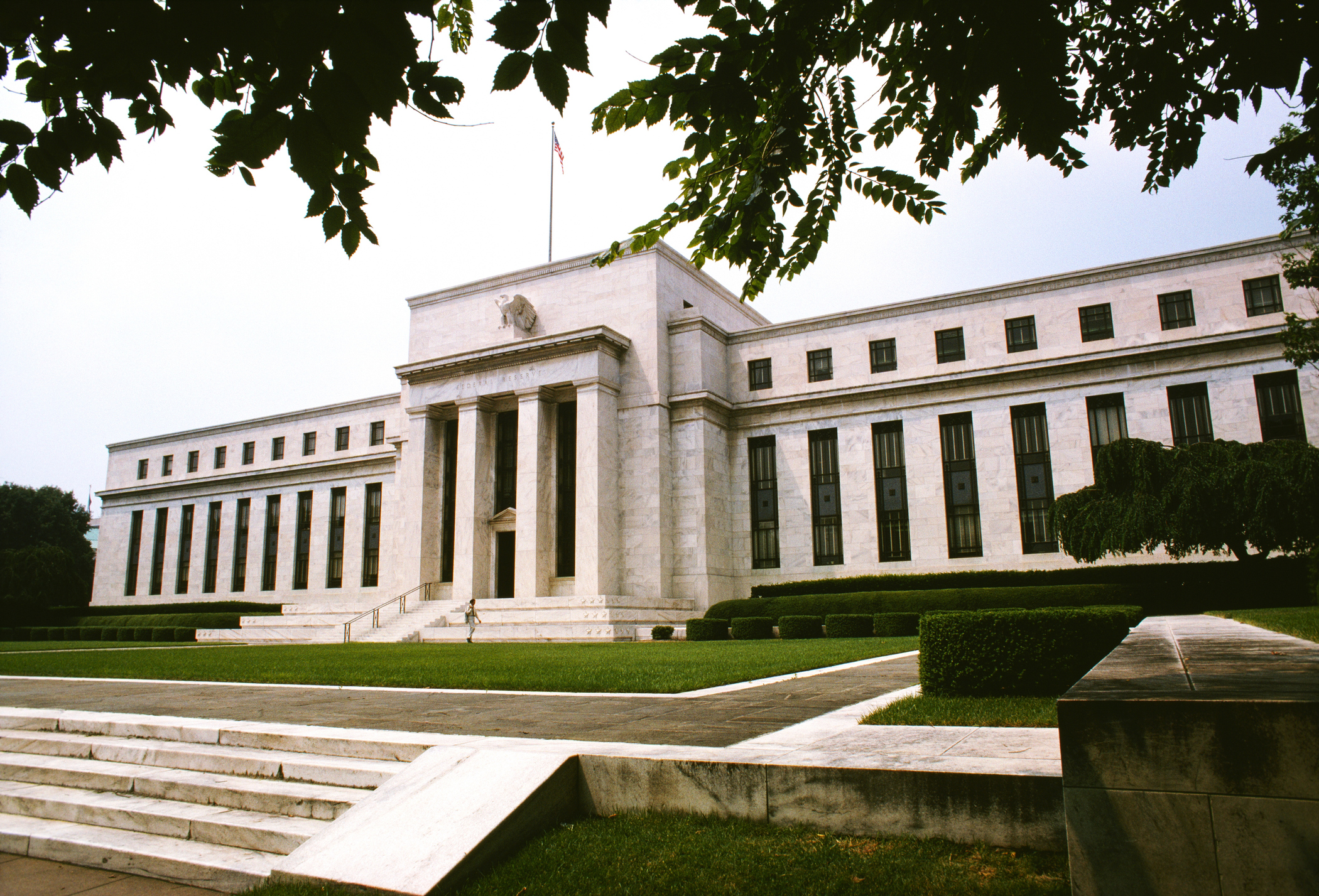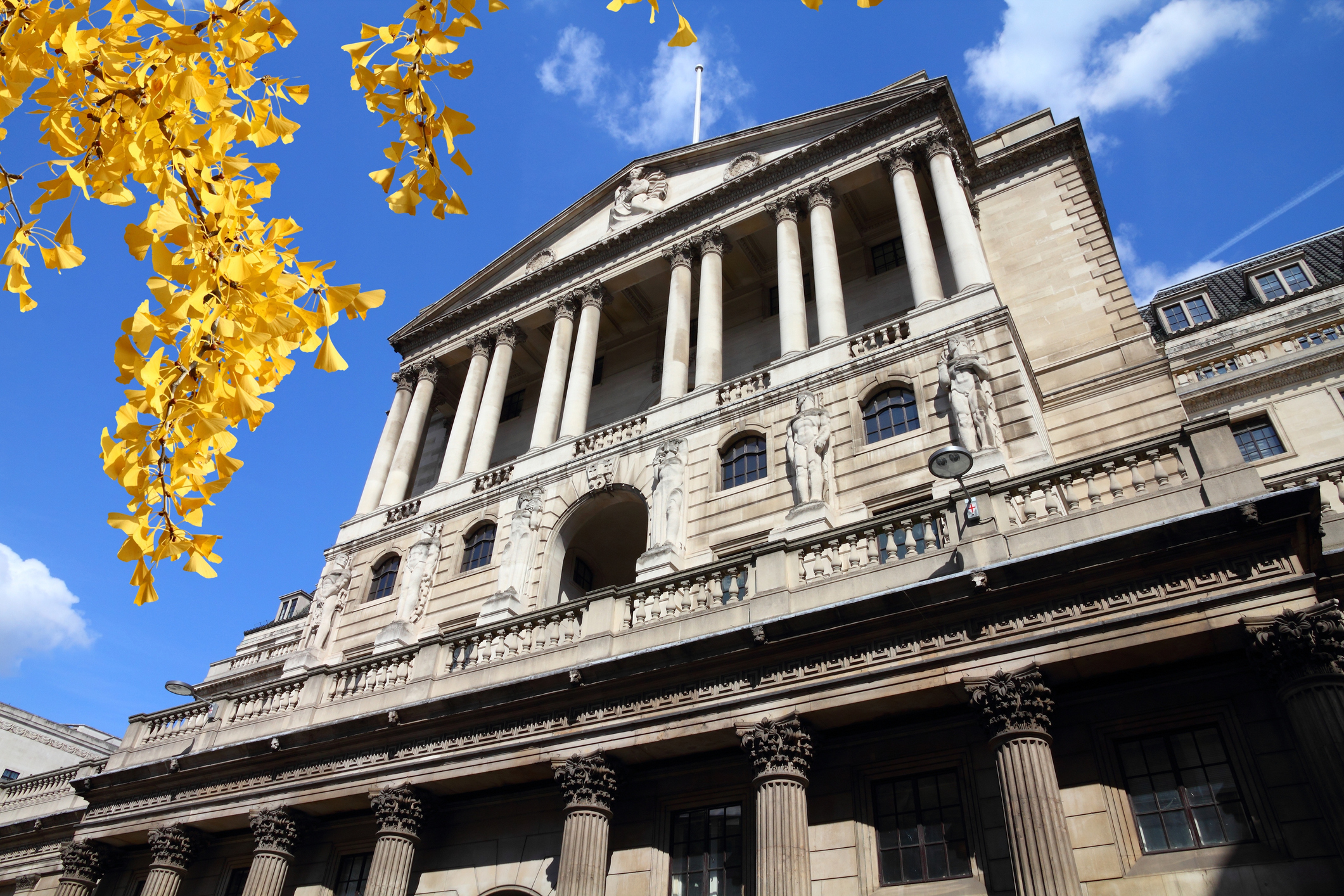The Bank of England has extended the government’s overdraft – what does that mean?
The Bank of England has given the government an unlimited overdraft – the most explicit form of money printing we’ve seen so far. John Stepek explains how it works, and why it could mark an epochal shift in the financial system.


We all know what it's like. You get to the end of a particularly hectic month – and you've forgotten about a few big payments that need to go out. You drop a quick line to the bank manager and he or she says: “Why of course it’s not a problem! We’ll extend your overdraft – temporarily of course. How does a limit of… oh infinity pounds sound?”
What, you mean your bank manager doesn’t say that? I mean, mine doesn’t either. But that’s what the government’s bank manager has just done. I guess we all need to start banking with the Bank of England.
The government is extending an overdraft to itself
The Bank of England has just extended the government’s overdraft facility.
MoneyWeek
Subscribe to MoneyWeek today and get your first six magazine issues absolutely FREE

Sign up to Money Morning
Don't miss the latest investment and personal finances news, market analysis, plus money-saving tips with our free twice-daily newsletter
Don't miss the latest investment and personal finances news, market analysis, plus money-saving tips with our free twice-daily newsletter
This overdraft – known as the “Ways and Means” facility – had a limit of just under £400m. As Chris Giles notes in the Financial Times, this has now been lifted “to an effectively unlimited amount”.
You’re probably sitting there thinking: “Hold on, what? How can the government have an unlimited overdraft with the Bank of England? What does that even mean?”
So let’s have a quick look at it.
When you or I have an overdraft, it means we owe our bank money. It’s a temporary and expensive loan to get us over a liquidity problem (either that, or it’s a stepping stone to a solvency problem). We have bills coming due and our wages haven’t hit the bank account yet. Hence the overdraft.
The government has a similar issue just now. All of this spending – on people who’ve temporarily lost their jobs, on companies and charities that need cash – is needed now. As Giles notes, the government has already tripled the amount of debt it plans to raise in financial markets this month from £15bn to £45bn.
That’s a big chunk of debt for markets to absorb. And the government needs the money now. So why not tap the Bank for a bit of support on the liquidity front?
Now you’re probably thinking: ah but wait a minute, John – isn’t the Bank of England, while ostensibly independent, just another arm of the government?
The answer is “yes”. You may well now be asking: eh, in that case, John, doesn’t that mean that the government has just asked itself for a bigger overdraft?
And the answer to that is also “yes”. And now you’re thinking: OK – but if that’s the case, then just where does this money come from?
Well the Bank of England just creates it. It prints it and it gives it to the government (metaphorically, obviously – it doesn’t just give Rishi Sunak a big red briefcase full of freshly-minted £20s).
This is known as “monetary financing”. This is something that new Bank of England boss Andrew Bailey has said that the Bank would definitely not do. Indeed, he declared that in a column for the FT a whole two days ago.
So what’s changed? And what does it mean?
This is the most explicit form of money printing we’ve seen so far
First things first, let me make something clear. Markets do not care a jot that the Bank of England is now explicitly funding government spending with printed money. Sterling barely budged this morning on the announcement (in fact it went up a bit). Gilt yields (the government’s cost of borrowing were unmoved).
So while on the one hand this sounds very dramatic – and in some ways it is – on the other hand, it’s simply the next logical step in formalising something that was already happening.
What is quantitative easing (QE)? In QE, the government issues IOUs and investors buy them. They begin trading on the public markets. And then the Bank of England sweeps in and buys them from investors.
So what’s the difference? Really? I mean, do you think that gilts would be yielding what they’re currently yielding if there wasn’t the promise of a price-insensitive buyer with a printing press standing behind them?
Do you really think that people would be queueing up to lend to the UK government at a negative real interest rate (ie getting thoroughly fleeced after inflation if held to maturity) if they didn’t know that they’d be able to flip the bond at a later date to the central bank?
All the Bank is really doing here is cutting out the middle stage of the process. The issuing of gilts, followed by investors buying, followed by the Bank buying them back off them – it’s a long way round of doing exactly what the Bank is doing now, which is simply printing the money off and handing it to the government.
So on the one hand, all of these things are fig leaves. And given the emergency circumstances, the market doesn’t care. The Bank is simply being sensible – it’s giving Sunak and the Treasury the option to go the easy way if disruption and volatility in financial markets makes going the long way round too tricky. (In 2008, the overdraft got as high as £20bn at one point).
On the other hand, these fig leaves matter. There’s a reason that developed markets can get away with this stuff while emerging markets will often struggle. If you’re going to print money then markets will let you do it as long as they think that adults are still in charge of the printing press. This is where all the Wizard of Oz stuff about central banking – the most important part of the job – comes in.
This is why Bailey came out earlier in the week to declare that the Bank would not do monetary financing, and then proceeded to explain that while QE looks a lot like monetary financing, it isn’t really, because it can be reversed.
It's also why the statement from the Treasury talks of the Ways and Means facility being “long established”. The argument is that “this is no big deal... we’re just managing liquidity. We are totally, totally not doing a Zimbabwe.” (And there’s some truth to this by the way – I’ll look at hyperinflation and its causes next week in Money Morning.)
The real problem is that the more we all see this sort of thing happening, the more pressure grows for it to happen all the time. If you can do it during an emergency, then why can’t you do it all the time?
The obvious response to that is that there are things you can do that are justified in emergencies that aren’t at other times (forcing the entire population to stay in their homes is one obvious example).
But unlike lockdowns, which we all can't wait to get out of, emergency money printing is far more seductive. If you can print money to fund the government, then why can’t you print money to compensate all the businesses and individuals who were rendered unemployed or bankrupt by this pandemic?
And if you can do that, why can’t you write off student debt? And if you can do that, why can’t you just pay people to go to university like you did in the old days for those dreadful over-privileged baby boomers (of whom only one in 20 went to uni, but who’s counting these days)?
You get my point. The Bank may not want to admit it, but it’s crossed a Rubicon here. It might hope that this is temporary and “short term”, but income tax was temporary too, and it’s lasted a lot longer than Napoleon did. I suspect Covid-19 will be a distant memory before money printing is anywhere close to being wound down.
Want to know more about all this? I really do suggest you subscribe to MoneyWeek right now. This is shaping up to be an epochal shift in the financial system, which will affect every aspect of how we invest, and having a reliable guide to keep you up to date is a good idea. You get your first six issues free, and not only that, but you get my new book on previous market booms and busts absolutely free as well. Simply sign up here.
Get the latest financial news, insights and expert analysis from our award-winning MoneyWeek team, to help you understand what really matters when it comes to your finances.
John Stepek is a senior reporter at Bloomberg News and a former editor of MoneyWeek magazine. He graduated from Strathclyde University with a degree in psychology in 1996 and has always been fascinated by the gap between the way the market works in theory and the way it works in practice, and by how our deep-rooted instincts work against our best interests as investors.
He started out in journalism by writing articles about the specific business challenges facing family firms. In 2003, he took a job on the finance desk of Teletext, where he spent two years covering the markets and breaking financial news.
His work has been published in Families in Business, Shares magazine, Spear's Magazine, The Sunday Times, and The Spectator among others. He has also appeared as an expert commentator on BBC Radio 4's Today programme, BBC Radio Scotland, Newsnight, Daily Politics and Bloomberg. His first book, on contrarian investing, The Sceptical Investor, was released in March 2019. You can follow John on Twitter at @john_stepek.
-
 London claims victory in the Brexit wars
London claims victory in the Brexit warsOpinion JPMorgan Chase's decision to build a new headquarters in London is a huge vote of confidence and a sign that the City will remain Europe's key financial hub
-
 Rachel Reeves's Autumn Budget: What it means for the UK
Rachel Reeves's Autumn Budget: What it means for the UKOpinion A directionless and floundering government has ducked the hard choices at the Autumn Budget, says Simon Wilson
-
 UK wages grow at a record pace
UK wages grow at a record paceThe latest UK wages data will add pressure on the BoE to push interest rates even higher.
-
 Trapped in a time of zombie government
Trapped in a time of zombie governmentIt’s not just companies that are eking out an existence, says Max King. The state is in the twilight zone too.
-
 America is in deep denial over debt
America is in deep denial over debtThe downgrade in America’s credit rating was much criticised by the US government, says Alex Rankine. But was it a long time coming?
-
 UK economy avoids stagnation with surprise growth
UK economy avoids stagnation with surprise growthGross domestic product increased by 0.2% in the second quarter and by 0.5% in June
-
 Bank of England raises interest rates to 5.25%
Bank of England raises interest rates to 5.25%The Bank has hiked rates from 5% to 5.25%, marking the 14th increase in a row. We explain what it means for savers and homeowners - and whether more rate rises are on the horizon
-
 UK inflation remains at 8.7% ‒ what it means for your money
UK inflation remains at 8.7% ‒ what it means for your moneyInflation was unmoved at 8.7% in the 12 months to May. What does this ‘sticky’ rate of inflation mean for your money?
-
 Would a food price cap actually work?
Would a food price cap actually work?Analysis The government is discussing plans to cap the prices of essentials. But could this intervention do more harm than good?
-
 Is my pay keeping up with inflation?
Is my pay keeping up with inflation?Analysis High inflation means take home pay is being eroded in real terms. An online calculator reveals the pay rise you need to match the rising cost of living - and how much worse off you are without it.
